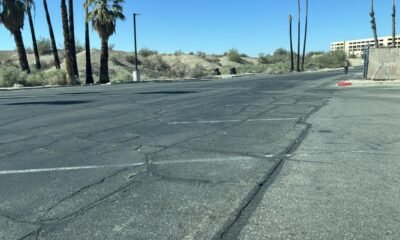arizona
Hualapai Tribe Takes Legal Action Against Federal Government Over Controversial Lithium Mining Near Sacred Spring

The Hualapai Tribe has voiced strong opposition to a lithium exploration project initiated by Big Sandy, Inc., a subsidiary of Australian mining company Arizona Lithium. The project, which recently received approval from the U.S. Bureau of Land Management (BLM), encompasses over 100 drilling sites near Wikieup, northern Arizona, and borders culturally significant sites for the tribe, including Ha’Kamwe’, a sacred medicinal spring.
Ha’Kamwe’ plays a central role in Hualapai cultural narratives, featuring prominently in songs and stories. The tribe claims its vital attributes, such as historic water flow and temperature, are essential for traditional practices. Despite the Hualapai’s concerted efforts—submitting public comments, sending letters, and engaging in consultations—the BLM proceeded with approval on June 6, 2023.
“It doesn’t feel like the BLM really heard us,” said Ka-voka Jackson, director of the Hualapai Department of Cultural Resources. The tribe’s sustained concerns over the project’s impact remained largely unacknowledged. In response, the tribe filed a lawsuit against the BLM, asserting that the drilling threatens their cultural practices tied to Ha’Kamwe’. On August 16, they requested a temporary restraining order to halt drilling operations immediately.
The lawsuit underscores the adverse effects of ground-disturbing activities that have already begun, impacting Ha’Kamwe’ and the surrounding area. This site, located within the tribe’s Cholla Canyon Ranch, is rigorous for cultural and spiritual uses, and Jackson described the BLM’s dismissal of potential negative impacts as “surprising, appalling and, frankly, disgusting.”
Furthermore, the tribe argues that the BLM has not followed proper environmental assessment protocols, violating key legislation such as the National Environmental Policy Act and the National Historic Preservation Act. The spring qualifies as a traditional cultural property and is eligible for the National Register of Historic Places.
Earthjustice Senior Attorney Laura Berglan, representing the Hualapai Tribe, criticized the BLM for failing to consider alternative methods to reduce the project’s adverse impacts, highlighting their engagement throughout the consultation process. She suggested that ignoring Indigenous knowledge in discussions regarding environmental impacts is troubling.
Jackson remarked that although the tribe attempted to communicate with the BLM during the environmental analysis phase, their concerns went largely unaddressed. In a statement to the Arizona Mirror, a BLM spokesperson confirmed ongoing consultations with tribes but did not provide specifics citing confidentiality.
The Hualapai Tribe firmly opposes the Big Sandy Valley project. As Jackson highlighted, the spiritual connection to Ha’Kamwe’ involves more than just property; it encapsulates their identity and history. The drilling project’s potential disruptions extend beyond cultural practices—impacting traditional gatherings, community activities, and natural resources.
According to BLM environmental assessments, the project is expected to cause temporary disturbances. However, the Hualapai Tribe raises concerns that such disturbances could irreparably alter their sacred lands. Jackson emphasized, “Those plants coming from that area have meaning,” noting their integral role in the tribe’s practices.
In a commitment to monitor the situation closely, the tribe retains aspirations to halt the project, which they perceive as an infringement upon their ancestral rights. Jackson indicated that their resolve to protect Ha’Kamwe’ will intensify amidst the ongoing controversy over the project and its implications for their future.


















